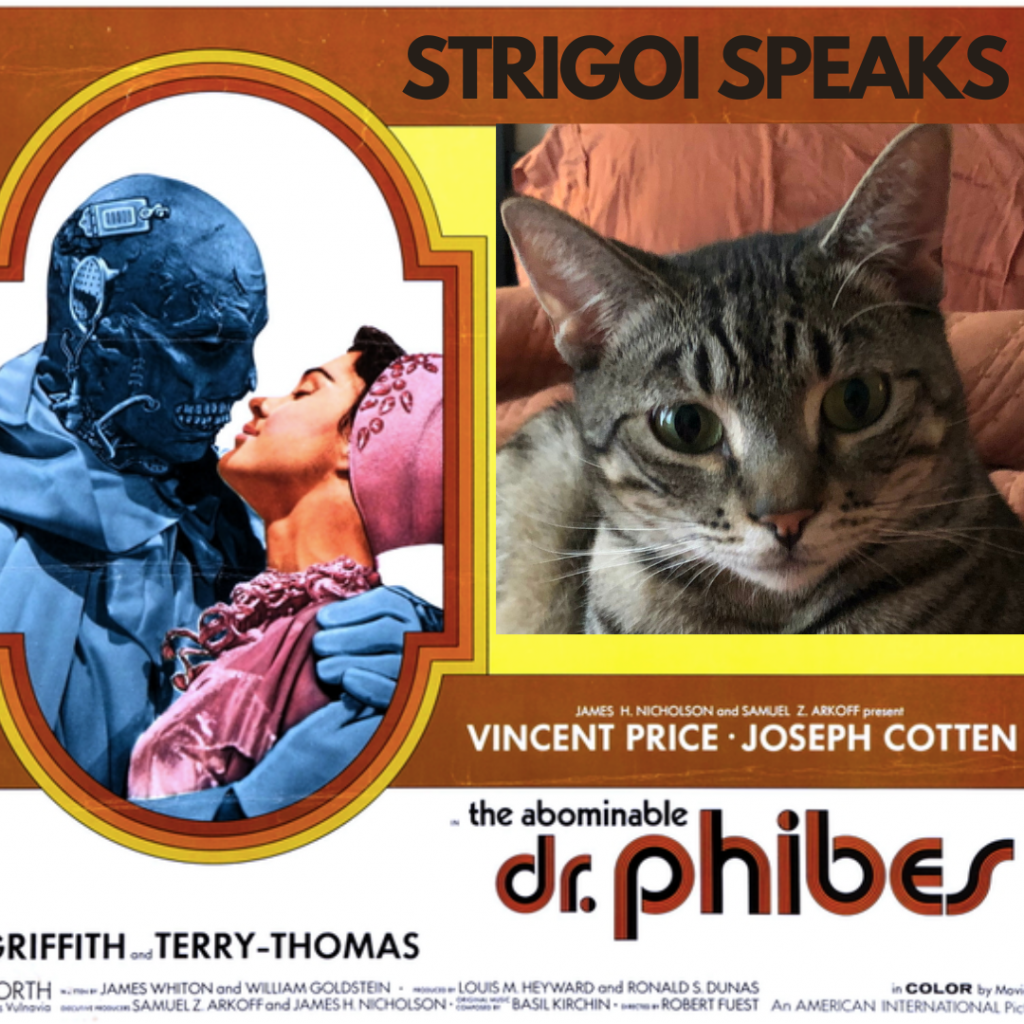
The Abominable Dr. Phibes (1971) delivered much more than I was expecting: It’s visually stunning and features an unforgettable performance by Vincent Price, who manages to communicate the content of sentences without once moving his lips–by the end of the film, my facial and neck muscles ached in sympathy. Through its gimmicks and theatrical style, it explores the subject of semiotics as seriously as any English major would. Literature, painting, sculpture, and other forms of creative expression usually depict something that is no longer immediately present–maybe it never was. In its wacky way, The Abominable Dr. Phibes meditates on the absence and longing at the center of both grief and art.
Dr. Phibes is a highly educated concert organist who accidentally drives his car off of a cliff while rushing to be with his ill wife, Victoria. Though presumed dead, he survives the wreck, using molded wax to repair his disfigured face and music technology to replace his voice. When Phibes learns that his wife died during surgery, he seeks vengeance against the nine doctors who participated in the operation, inventing complicated, mechanized murders for each one.
Human and graphic representations substitute for Victoria and demonstrate how loss–or more specifically, the desire to recapture what is gone–motivates artistic production. This is best illustrated by Phibes’ stylish assistant. For most of the movie, I wondered if the silent and beautiful woman dancing with him and facilitating his plans was in fact his wife–maybe her revivified corpse, an exceptionally graceful zombie, I thought. As it turns out, she is a different person. Still, the confusion she creates compelled me to think about how the film’s originary absence is the precondition for so much beauty: Mixing music, clothing, and the visual arts, the interactions between Phibes and this fashionista form one surreal tableau after another. From the assistant on the dance floor to the portrait over the vanity, Victoria’s stand-ins only intensify my desire to see the woman who started it all. When she is finally revealed, however, we are still denied direct access. With our gaze mediated by a mirror, we see the real thing by way of a reflection.
The salient features of Dr. Phibes’ mourning–the distance between the couple and his constant desire to bridge it– structure his eccentric self-fashioning and intricate criminal activity, two practices that are really artistic endeavors. Consider Phibes’ voice: Projected from a horn speaker, it is separated from his body, often sounding out of time with the movements of his throat. Like his speech, Phibes’ murders are also heavily mediated. He boils brassicas to create a syrup, which is then drizzled on a sleeping nurse’s face, which is then eaten by locusts. With so many steps between his idea of killing the woman and her actual death–not to mention all of the ways it could have gone wrong–it’s difficult to trace a straight line between Phibes and the crime.
Throughout the movie, causes are separated from effects, intentions divorced from actions, and originals replaced by substitutes. Viewing Dr. Phibes is disorienting in the way that experiencing a work of art can be. This is not to suggest that the film is pretentious or frustratingly obscure. Rather, it’s strange enough to be entertaining but not so bizarre as to cross the line into arthouse experiment.